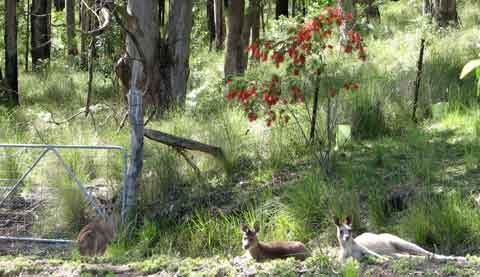
Early morning, sunshine after days of rain, the grass still soggy. The kangaroo family has decided that just inside the forever-open gate, on the hard-packed clay track, is the driest place to rest.
They know my car only moves out of the shed every few weeks — the track’s more for them than for me.
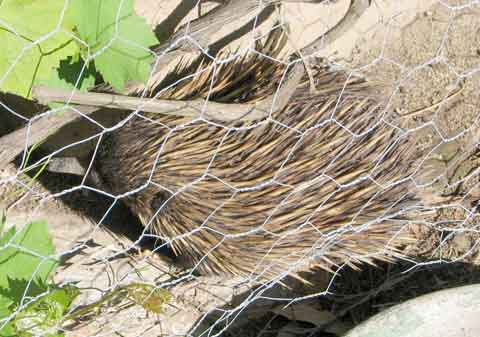
Midday, and one of the echidnas has been poking about on the same track, then working its way down some steps cut into the bank. It had reached the flat area near the cabin and was moseying along the wall towards my steps.
I’d had to net the ornamental grape there, so its shoots had a chance to grow to be my summer shade. Having already seen a joey go under it and panic somewhat, suddenly I saw a potential problem in the combination of spikes and netting, should the echidna go in under the wire.
As it did, but kept going, under the verandah and out. Untangling an echidna might not have been easy.
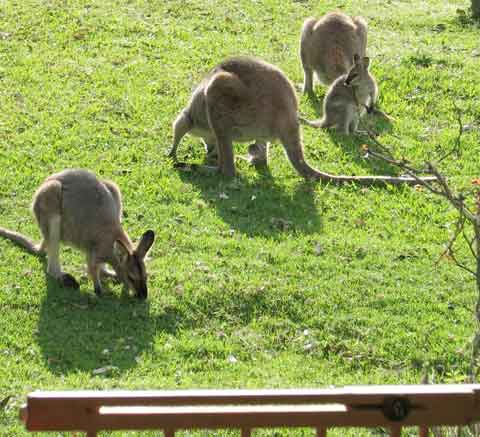
Late afternoon, and over the top of the netted toddler barrier, a wallaby family was mowing the grass near the steps. I’m no longer sure if I’m netted in, or they out. Lucky I have long legs for a shortie and can step over this barrier.
I had to add the netting because one day I surprised a joey munching on the plants on the verandah, having got through the wooden bars.
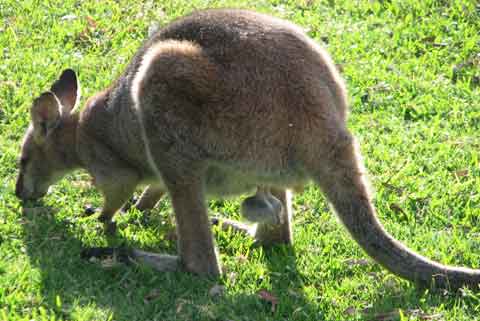
I don’t mean to be voyeuristic but sometimes the colloquial greeting, ‘How’re they hanging?’ takes on new meaning. And to think they leap through the tall tussocks without getting caught up or damaged…
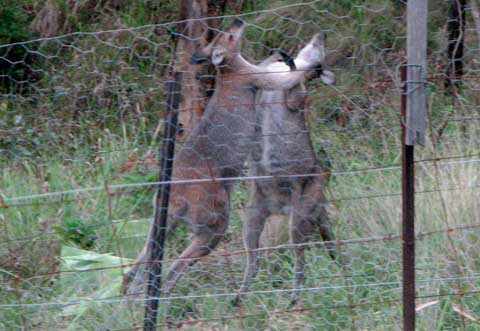 These two males were in a group that was following a young female down the hill past my yard. For some reason — a muttered slight on the lady’s honour or the the rival’s virility? — they broke off the pursuit and began fighting.
These two males were in a group that was following a young female down the hill past my yard. For some reason — a muttered slight on the lady’s honour or the the rival’s virility? — they broke off the pursuit and began fighting.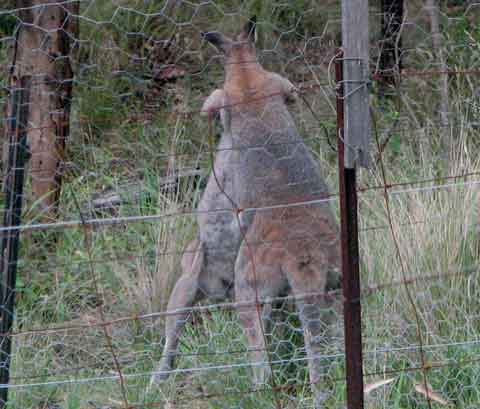 Their necks look vulnerable in the position they assume, but it must be against the rules to go for the throat. The pair of them kept it up as they danced through the tussocks, turning and tumbling down the slope to the gully, out of my sight.
Their necks look vulnerable in the position they assume, but it must be against the rules to go for the throat. The pair of them kept it up as they danced through the tussocks, turning and tumbling down the slope to the gully, out of my sight. I was delighted to see my Welcome Swallow couple back, swinging on my verandah fairy lights and re-occupying their nest on the rafter. I meant to do a post for you when the eggs hatched, as she seemed to be sitting most of the time now.
I was delighted to see my Welcome Swallow couple back, swinging on my verandah fairy lights and re-occupying their nest on the rafter. I meant to do a post for you when the eggs hatched, as she seemed to be sitting most of the time now.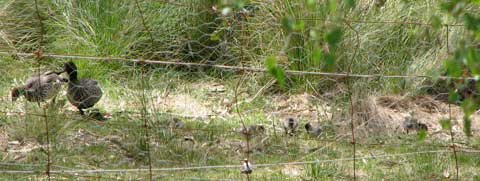 Next day my concern was erased.
Next day my concern was erased.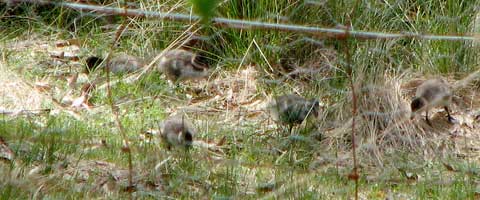
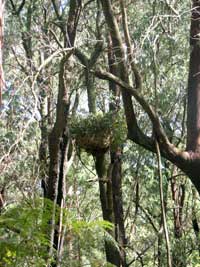 As you might expect, given that I live in forest country, I love trees.
As you might expect, given that I live in forest country, I love trees.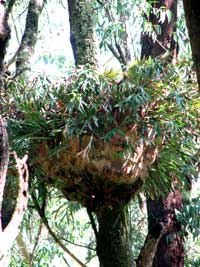
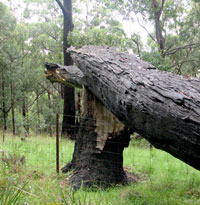 Even when a tree is totally destroyed, its trunk broken off and laid low, taken from skydweller to ground hugger, it takes on new life as host. Like this mighty ancient, which blocked the track for some time until a big enough chainsaw came along.
Even when a tree is totally destroyed, its trunk broken off and laid low, taken from skydweller to ground hugger, it takes on new life as host. Like this mighty ancient, which blocked the track for some time until a big enough chainsaw came along.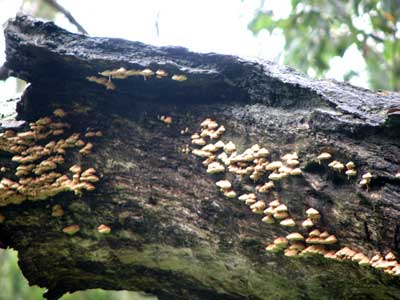
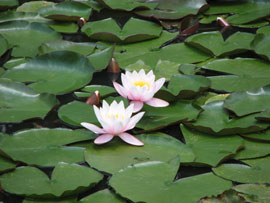
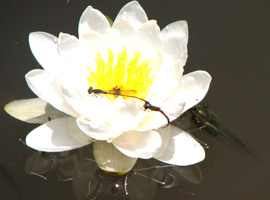
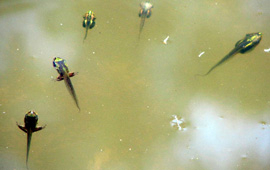
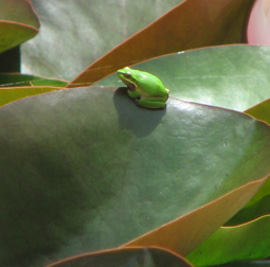
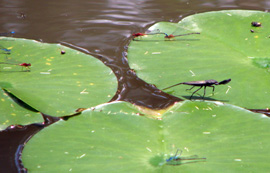
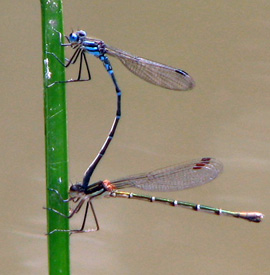 On my small dam the waterlilies are blooming, their large circular leaves so abundant that they are overlapping, curling up at their edges.
On my small dam the waterlilies are blooming, their large circular leaves so abundant that they are overlapping, curling up at their edges.